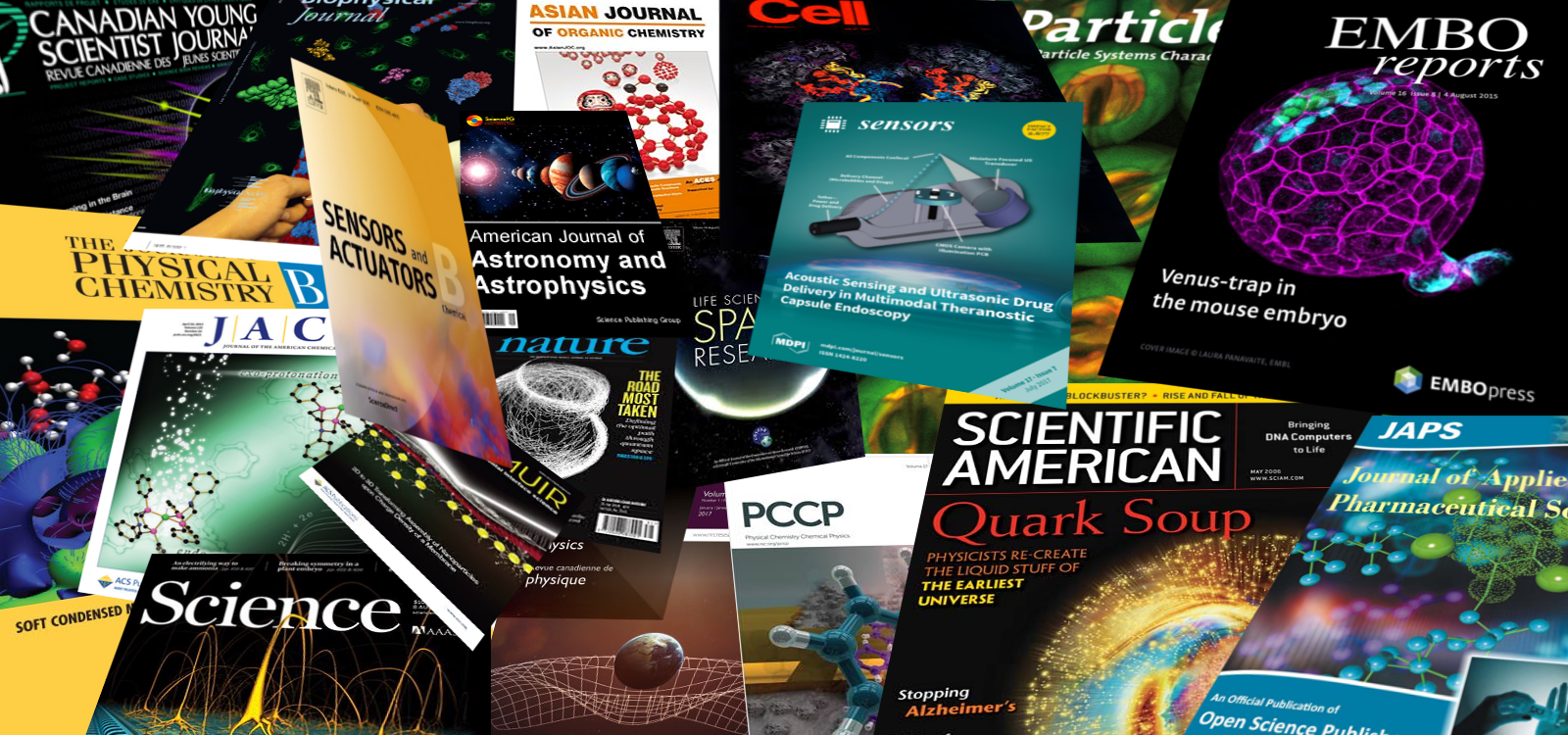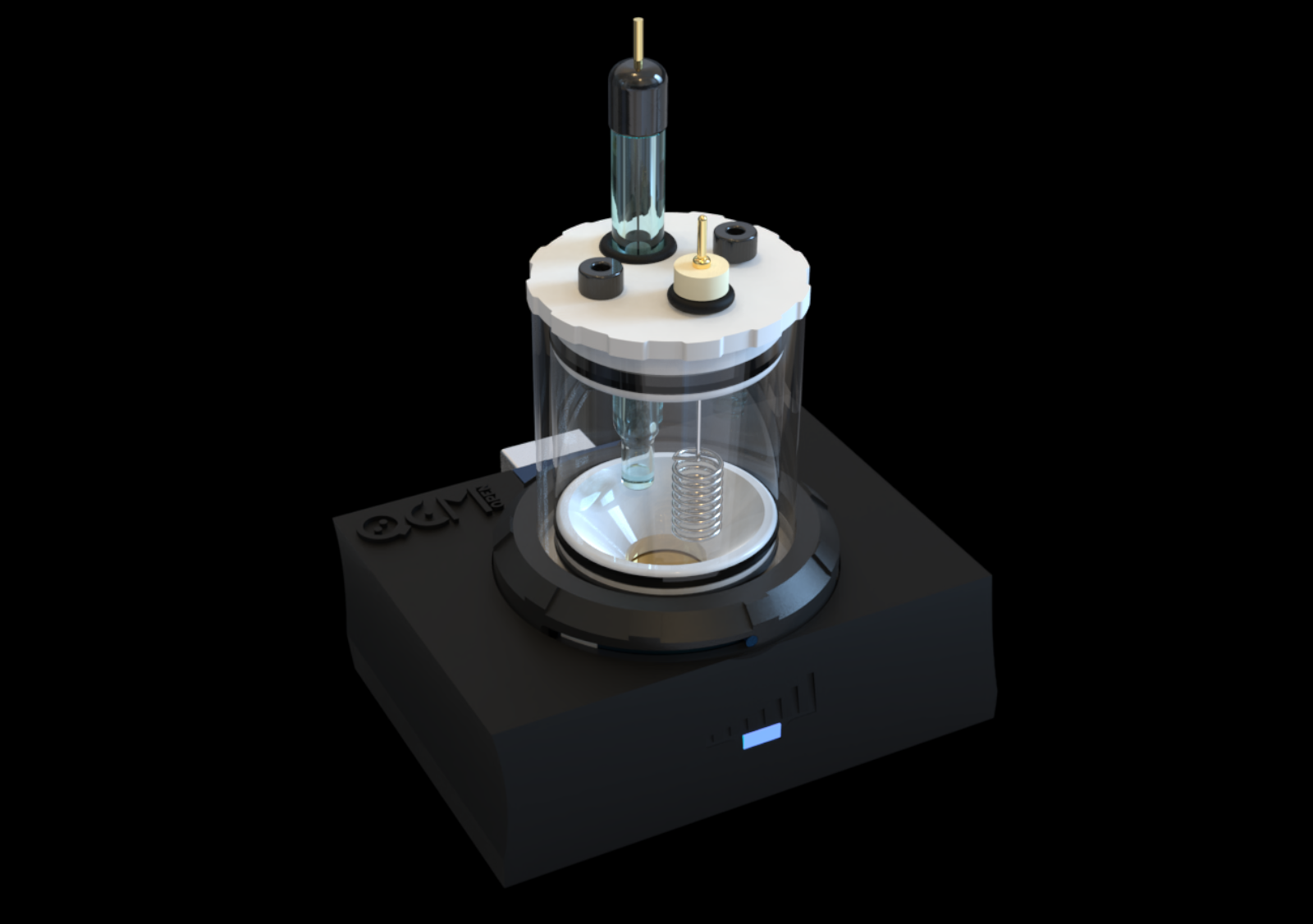openQCM – Powered by Novaetech S.r.l

Scientific Papers
Publications citing the applications of openQCM (by Novaetech S.r.l.) instruments and accessories in scientific research.
The list of scientific papers published on the most important journals showing the usage of openQCM in several scientific fields, such as thin film deposition, chemical sensors, biological research and biosensors.
Because of the large number of publications, we are reorganizing everything by subject areas. This will take some time. Thank you for your patience
2025
Berisha, A. P.; Mykhaylyk, O. O.; Armes, S. P.; Ambarkar, A.; Malde, C.
Determination of Both Wet and Dry Mass of Water-Soluble Polymers Adsorbed on Planar Silica Using a Quartz Crystal Microbalance Journal Article
In: Langmuir, vol. 0, no. 0, pp. null, 2025, (PMID: 40587480).
Abstract | Links | BibTeX | Tags: Adsorption, nanoparticles, openQCM NEXT, polymers, QCM-D, Quartz Crystal Microbalance (QCM), sensors, Silica
@article{doi:10.1021/acs.langmuir.5c01380,
title = {Determination of Both Wet and Dry Mass of Water-Soluble Polymers Adsorbed on Planar Silica Using a Quartz Crystal Microbalance},
author = {A. P. Berisha and O. O. Mykhaylyk and S. P. Armes and A. Ambarkar and C. Malde},
url = {https://doi.org/10.1021/acs.langmuir.5c01380},
doi = {10.1021/acs.langmuir.5c01380},
year = {2025},
date = {2025-06-30},
urldate = {2025-06-30},
journal = {Langmuir},
volume = {0},
number = {0},
pages = {null},
abstract = {It is well-established that polymer adsorption at a model planar interface can be studied using a quartz crystal microbalance (QCM). Normally, this technique reports both the adsorbed mass of polymer chains plus any bound or entrained solvent molecules. Thus the total adsorbed amount significantly exceeds that reported by optical reflectometry or determined from adsorption isotherms obtained for colloidal substrates using a supernatant depletion assay. Herein we report a new QCM approach whereby the dry adsorbed amount, Γdry, is obtained directly from the wet (solvated) adsorbed amount, Γwet, by switching from a liquid flow to a flow of nitrogen gas. The latter conditions lead to complete removal of the solvent, leaving only the desolvated adsorbed polymer chains. This strategy is exemplified for the adsorption of two well-known nonionic water-soluble polymers, poly(ethylene glycol) (PEG) and poly(N-vinylpyrrolidone) (PNVP), from aqueous solution onto a model planar substrate (silica). These two systems were selected to facilitate direct comparison with the literature, which validates this new approach.},
note = {PMID: 40587480},
keywords = {Adsorption, nanoparticles, openQCM NEXT, polymers, QCM-D, Quartz Crystal Microbalance (QCM), sensors, Silica},
pubstate = {published},
tppubtype = {article}
}
It is well-established that polymer adsorption at a model planar interface can be studied using a quartz crystal microbalance (QCM). Normally, this technique reports both the adsorbed mass of polymer chains plus any bound or entrained solvent molecules. Thus the total adsorbed amount significantly exceeds that reported by optical reflectometry or determined from adsorption isotherms obtained for colloidal substrates using a supernatant depletion assay. Herein we report a new QCM approach whereby the dry adsorbed amount, Γdry, is obtained directly from the wet (solvated) adsorbed amount, Γwet, by switching from a liquid flow to a flow of nitrogen gas. The latter conditions lead to complete removal of the solvent, leaving only the desolvated adsorbed polymer chains. This strategy is exemplified for the adsorption of two well-known nonionic water-soluble polymers, poly(ethylene glycol) (PEG) and poly(N-vinylpyrrolidone) (PNVP), from aqueous solution onto a model planar substrate (silica). These two systems were selected to facilitate direct comparison with the literature, which validates this new approach.
2024
Buksa, Hubert; Johnson, Edwin C; Chan, Derek HH; McBride, Rory J; Sanderson, George; Corrigan, Rebecca M; Armes, Steven P
Arginine-Functional Methacrylic Block Copolymer Nanoparticles: Synthesis, Characterization, and Adsorption onto a Model Planar Substrate Journal Article
In: Biomacromolecules, 2024.
Abstract | Links | BibTeX | Tags: aldehyde-functional, nanoparticles, openQCM NEXT, polymers, QCM, QCM-D, Quartz Crystal Microbalance
@article{buksa2024arginine,
title = {Arginine-Functional Methacrylic Block Copolymer Nanoparticles: Synthesis, Characterization, and Adsorption onto a Model Planar Substrate},
author = {Hubert Buksa and Edwin C Johnson and Derek HH Chan and Rory J McBride and George Sanderson and Rebecca M Corrigan and Steven P Armes},
url = {https://pubs.acs.org/doi/10.1021/acs.biomac.4c00128?goto=supporting-info},
doi = {https://pubs.acs.org/doi/10.1021/acs.biomac.4c00128?goto=supporting-info},
year = {2024},
date = {2024-05-02},
urldate = {2024-05-02},
journal = {Biomacromolecules},
publisher = {ACS Publications},
abstract = {Recently, we reported the synthesis of a hydrophilic aldehyde-functional methacrylic polymer (Angew. Chem., 2021, 60, 12032–12037). Herein we demonstrate that such polymers can be reacted with arginine in aqueous solution to produce arginine-functional methacrylic polymers without recourse to protecting group chemistry. Careful control of the solution pH is essential to ensure regioselective imine bond formation; subsequent reductive amination leads to a hydrolytically stable amide linkage. This new protocol was used to prepare a series of arginine-functionalized diblock copolymer nanoparticles of varying size via polymerization-induced self-assembly in aqueous media. Adsorption of these cationic nanoparticles onto silica was monitored using a quartz crystal microbalance. Strong electrostatic adsorption occurred at pH 7 (Γ = 14.7 mg m–2), whereas much weaker adsorption occurred at pH 3 (Γ = 1.9 mg m–2). These findings were corroborated by electron microscopy, which indicated a surface coverage of 42% at pH 7 but only 5% at pH 3},
keywords = {aldehyde-functional, nanoparticles, openQCM NEXT, polymers, QCM, QCM-D, Quartz Crystal Microbalance},
pubstate = {published},
tppubtype = {article}
}
Recently, we reported the synthesis of a hydrophilic aldehyde-functional methacrylic polymer (Angew. Chem., 2021, 60, 12032–12037). Herein we demonstrate that such polymers can be reacted with arginine in aqueous solution to produce arginine-functional methacrylic polymers without recourse to protecting group chemistry. Careful control of the solution pH is essential to ensure regioselective imine bond formation; subsequent reductive amination leads to a hydrolytically stable amide linkage. This new protocol was used to prepare a series of arginine-functionalized diblock copolymer nanoparticles of varying size via polymerization-induced self-assembly in aqueous media. Adsorption of these cationic nanoparticles onto silica was monitored using a quartz crystal microbalance. Strong electrostatic adsorption occurred at pH 7 (Γ = 14.7 mg m–2), whereas much weaker adsorption occurred at pH 3 (Γ = 1.9 mg m–2). These findings were corroborated by electron microscopy, which indicated a surface coverage of 42% at pH 7 but only 5% at pH 3

